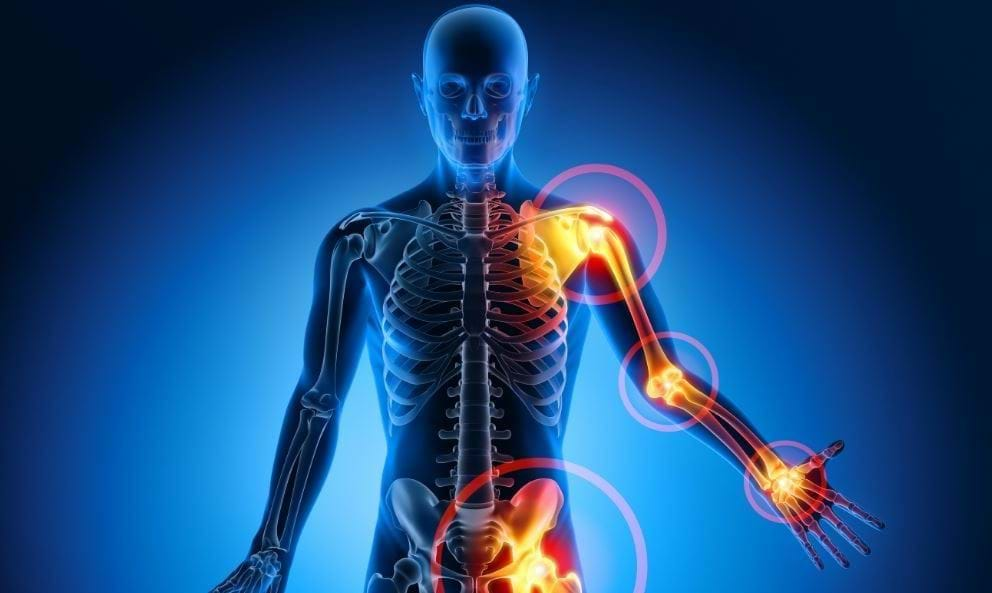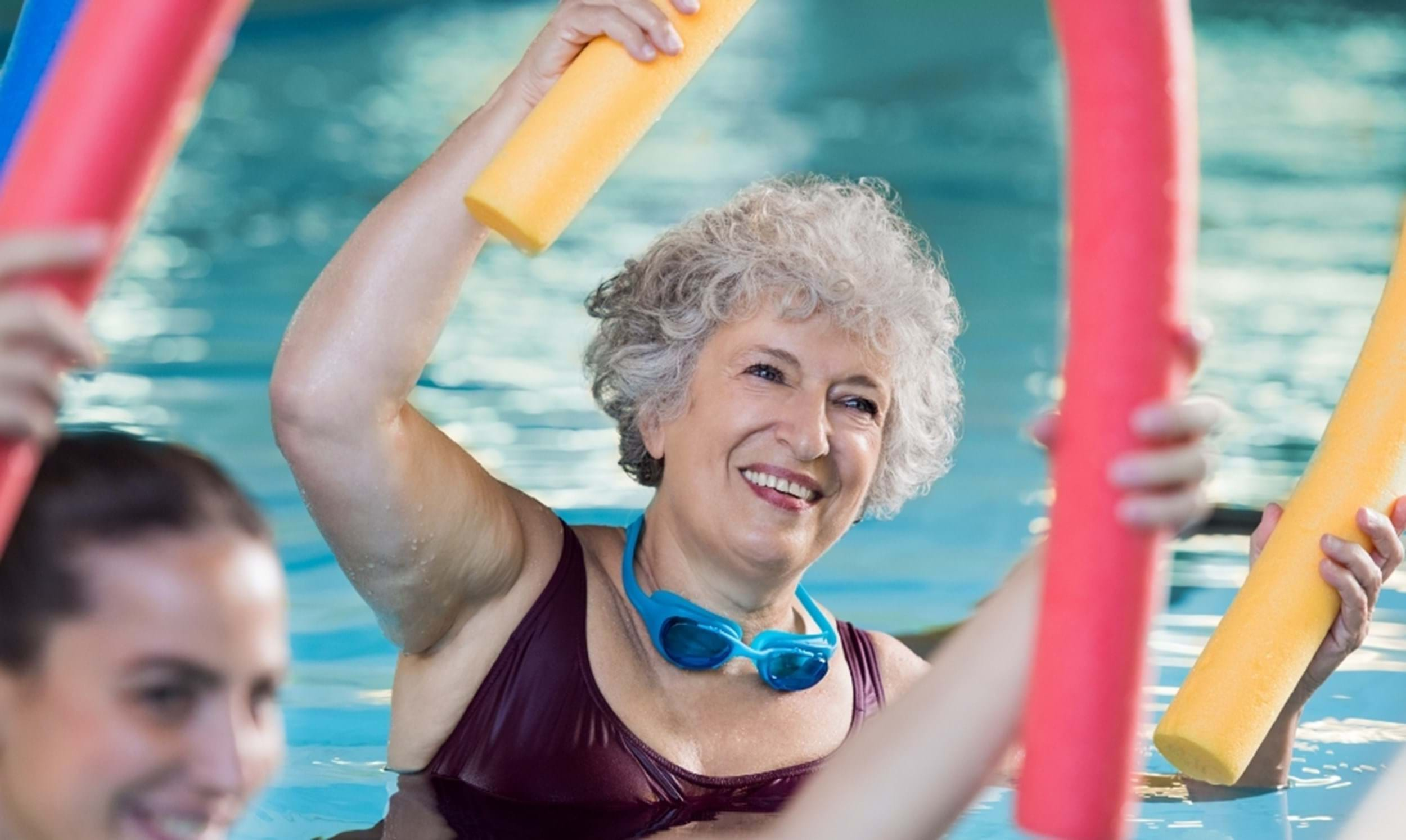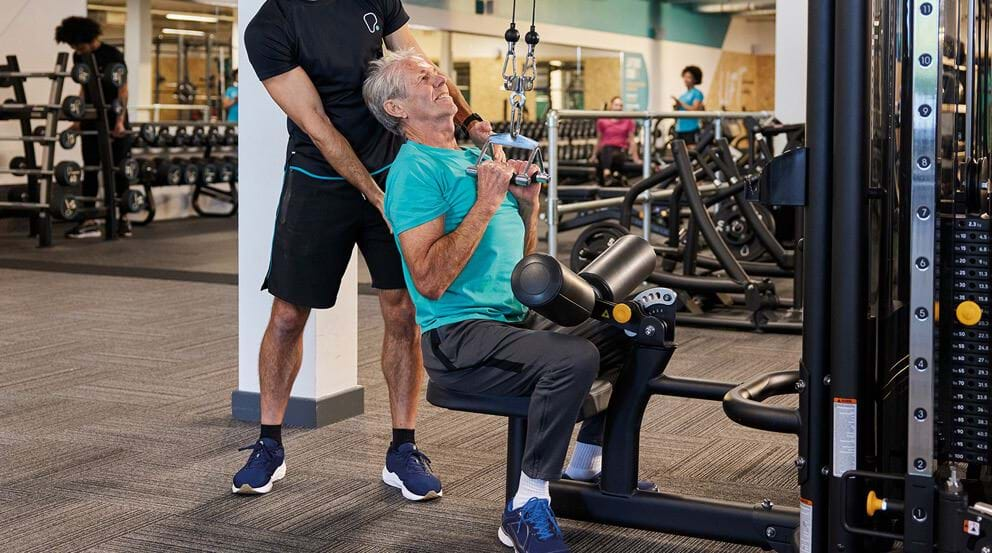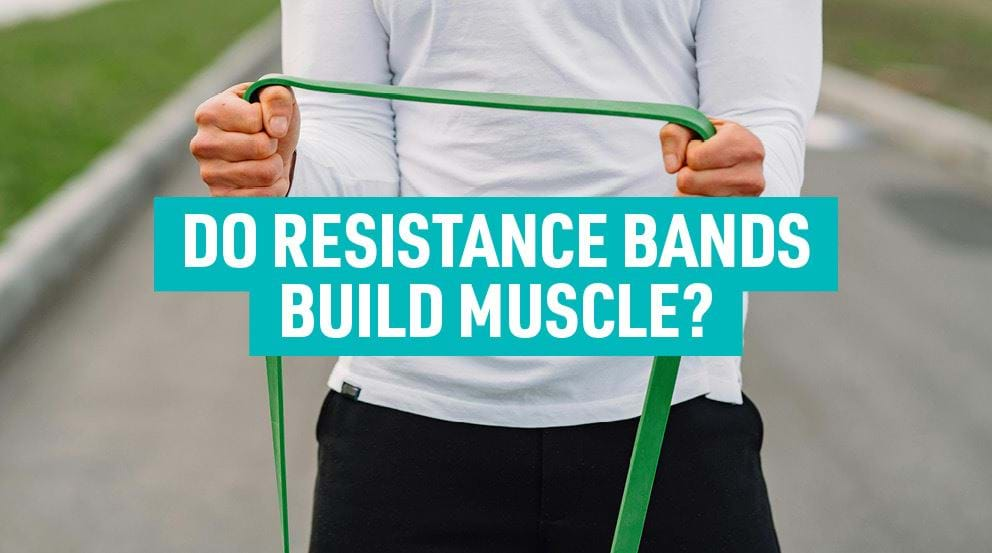Osteoarthritis and Exercise: Why (and How) You Should Keep Moving

What is osteoarthritis | Is exercise good for osteoarthritis | Exercises to avoid with osteoarthritis | Strengthening exercises for osteoarthritis | Stretching exercises for osteoarthritis | Aerobic exercises for osteoarthritis
Getting aches and pains in the muscles and joints happens to the best of us, and is often due to overuse, underuse, or an imbalance between muscles. While these issues can be treated with a combination of rest and rehabilitation, what happens when the pain is caused by something more permanent?
Osteoarthritis is a common medical condition which causes painful, inflamed joints. There is a lot of conflicting information out there on how this condition should be managed, especially when it comes to exercise.
In this article, Personal Trainer Emma Vincent, who has a Level 3 Qualification in Exercise and GP Referral, looks at the exercises which can help to improve osteoarthritis symptoms, as well as which exercises to avoid that can make it worse.
What is osteoarthritis?
Osteoarthritis is the most common form of arthritis -- it affects over 8 million people in the UK alone. Sometimes referred to as wear-and-tear arthritis, it is a degenerative disease, which means it progressively worsens over time.
Osteoarthritis occurs due to the breakdown and eventual loss of smooth cartilage in the joint. Smooth cartilage in the joints acts as a cushion and help the bones to glide smoothly over each other; as this cartilage deteriorates, the underlying bone can thicken and develop spurs due to increased load and rubbing against the other bone.
The condition typically starts in one joint, and can progress to others, and the joints in the feet, hands, knees, hip, and spine are more likely to be affected.
Symptoms of osteoarthritis include:
Pain, especially in load bearing exercises
Difficulty moving the joints affected
Tender and/ or swollen joints
Pain and stiffness when immobile for long periods of time
Over time, people may also experience weakness and muscle atrophy in the muscles surrounding the affected joint.
Is exercise good for osteoarthritis?
If you're struggling with painful joints due to osteoarthritis, the last thing you might want to do is exercise. While this condition can't be reversed, exercise is a great way to manage osteoarthritis and can help to prevent the joints from deteriorating further.
Exercising can help osteoarthritis in a few ways:
Reducing excess weight
If you're overweight, losing weight can help to reduce the pressure on your joints. This means less pain when moving, and a reduced risk of further damage to your joints. While exercise alone won't cause weight loss, it can help to create a calorie deficit which is essential for losing fat.
Strengthening the supporting muscles
People with osteoarthritis may limit their movement due to pain, but this can result in muscle deterioration, which can lead to increased pain over time. Strengthening the muscles supporting your joints helps to reduce the load and shock that your joint receives.
Improving range of motion on the joints
When it comes to our flexibility and range of movement, our bodies have a use it or lose it policy. The less you move, the stiffer your joints become, which can worsen the symptoms of osteoarthritis. Exercising helps to maintain and even increase our pain free range of motion, which means less pain and stiffness in our joints.
Are there any exercises which should be avoided with osteoarthritis?
While exercising is extremely beneficial to individuals with osteoarthritis, high impact exercises can be more damaging than beneficial.
Exercises that can make osteoarthritis worse and should be avoided in certain circumstances include:
Running
Running is very high impact on the knee and hip joints, which are often the joints affected by osteoarthritis. Running may speed up cartilage deteriorate and cause damage to the bone, as well as worsen pain.
Some sports
Sports which involve the person changing direction quickly, like tennis, basketball, netball, and football, can worsen osteoarthritis over time, and can also lead to muscle and tendon injuries.
Plyometric exercises
Plyometric exercises are high impact, high intensity exercises which involve explosive movements like box jumps, and can be hard on the joints.
It's also recommended to avoid high repetition activities that can put a strain on the joints, and to avoid or reduce exercise during a flare up.
Not everyone with osteoarthritis will need to avoid these exercises -- some may be okay limiting the number of sessions or reducing the intensity, or just avoiding them during flare ups. It's best to speak to your GP to understand what you can do, as it's difficult to provide a one size fits all recommendation!

The best exercises for osteoarthitis
There are many exercises which can be done by someone with osteoarthritis -- any exercise which is low impact and is done at the right pace and intensity for your body, is likely to be beneficial.
Resistance training and stretching exercises strengthen the muscles and increase your range of motion, which can help to improve your symptoms and help prevent your condition from worsening, while aerobic exercises improve your cardiovascular endurance and general fitness.
Strengthening exercises
The following osteoarthritis exercises are ones which help to strengthen the muscles around the knees and hips, two of the joints most commonly affected by osteoarthritis.
Before doing any exercise, make sure to spend 10 minutes warming up. Warm up exercises help to increase blood flow (and oxygen) to the muscles and raise your body temperature, which makes the muscles more pliable and less prone to injury.
You also want to only work within a pain free range of movement, and with a weight or resistance that is manageable. As you build up strength and mobility, you can progress to more challenging exercises.
Sit to stand
The sit to stand is a great way to build up strength in your quads, glutes, and hamstrings, and can be used to work towards bodyweight squats.
- Find a chair, bench, or box where the seat sits level with your knees
- Stand about a foot in front of the chair, feet hip width apart
- Keeping your back straight, sit down toward the edge of the chair while breathing in, making sure to control the descent. You can hold your arms out in front for balance if required
- Breathe out and push through your heels and lift your hips up off the chair back to standing
Mini wall sit
This is another exercise which works the quads, glutes, and hamstrings. It can be done standing with your back against the wall, or with a stability ball between your back and the wall.
- Stand tall with your back against the ball or wall, feet slightly wider than hip width apart, knees and toes facing out, and take a deep breath
- As you breathe out, sink your hips down while maintaining contact between your back and the ball/ wall
- Go as low as you are comfortably able to, and then hold for 2-5 seconds
- Breathe in and slowly roll back up
Knee extension
The knee extension exercise works the quads (the muscles on the front of your thigh). If you have a gym membership, you can do this exercise on a leg extension machine.
- Sit tall on a chair with your feet flat on the floor, and pull your shoulders back and down
- Grab the sides of the chair to keep your torso still and engage your core
- Lift your foot off the floor and extend your knee until your leg is fully straight
- Hold at the top of the movement for a second and squeeze your quads before lowering your leg back down
- Repeat on the other side
Hip abduction
The hip abduction exercise works your glutes and hip abductors (the muscles on the outside of your thighs). You can also do hip abduction on the outer thigh/ abduction machine at the gym, or by wrapping a resistance band around your knees.
- Sit tall on a chair with your feet flat on the floor, hip width apart, and place your hands on the outside of your knees
- Use your knees to push out into your hands, while simultaneously pushing your hands into your knees to resist the force
- Hold this position for 5 seconds and then relax
Step ups
Step ups work the glutes, quads, and hamstrings, and can be made more or less challenging by increasing or decreasing the size of the step.
- Stand in front of a box or step, then place your right foot onto the step
- Press down through your right heel to drive your body up as you step your left leg onto the box
- Step your left leg back down, making sure to control the descent slowly, and then step your right foot down
Stretching exercises
Stretching can help to relieve tight, stiff muscles, improve your range of movement, and even lubricate your joints. Stretches can be dynamic, which involves actively moving the muscles and joints through their full range of motion, or static, where the muscle is held in a stretched position for a period of time. Including both types will see an improvement in your mobility and flexibility. You can check out some of the best stretching exercises here.
Yoga and Pilates are both good practices for stretching and strengthening the muscles, and can help to improve body awareness, stability, and balance. Check out our top yoga poses for beginners here, or try a beginner friendly yoga or Pilates class!
Aerobic exercises
Aerobic exercises, more commonly known as cardio, has amazing health benefits for your cardiovascular system, including the heart and lungs. It also helps to burn calories, and improve your fitness and endurance.
Some low impact aerobic exercises for osteoarthritis include:
Cycling
Cycling is low impact, and also helps to strengthen the leg muscles and work the knees through a good range of motion.
Swimming and water aerobics
Swimming and water based aerobics are great for people with osteoarthritis. The water provides resistance for the muscles, which helps to strengthen them, while also supporting your joints due to the buoyancy.
Cross trainer
The cross trainer is a low impact, full body alternative to running and can be a good cardio option for people with osteoarthritis.
Low impact dance fitness classes
Love to dance? As long as you're not jumping, twisting, or doing anything too high impact, dance fitness classes can be great for people with osteoarthritis.
If you work out several times a week, alternating what aerobic exercise you do can help to avoid overuse of any single joint.
If you want to start exercising with osteoarthritis but are still not entirely comfortable with what you can and can't do, you can speak to your GP or a physiotherapist, or you can see if your nearest gym has a Personal Trainer with a GP referral qualification like myself who can help to safely build your strength and range of movement, and help to improve your symptoms. I also cover some of the best exercises for rheumatoid arthritis in this guide.


